RapidFit Enables Auto Manufacturers to Accelerate the Time Between Prototyping and Production
Tooling manufacturer RapidFit, backed by decades of 3D printing experience, provides modular inspection, production and design solutions to help auto manufacturers win the race in time to market. But to maintain quality as well as speed, they have turned to Zimmermann's milling machine for precise finishing.
High quality requirements and short market introduction times -- automobile manufacturers are in constant competition.
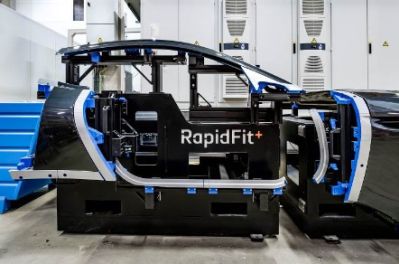
The Smart Cube is created at an early stage of the design and is continuously developed with CAD updates.
In order to significantly accelerate the processes between prototyping and production, RapidFit has developed a modular system to supply fixtures and test gauges in the shortest possible time with maximum flexibility. This is achieved by the clever combination of a highly standardized basic structure in conjunction with additively manufactured molded parts.
In order to achieve a very high accuracy and high-quality surfaces, the contact surfaces are mechanically fine-machined. For this purpose, RapidFit uses a portal milling machine FZ33 compact from F. Zimmermann GmbH.
If a manufacturer wants to be successful with its vehicles, it must bring an attractive design to market very quickly. This calls for solutions that make vehicle development more efficient, faster and more flexible.
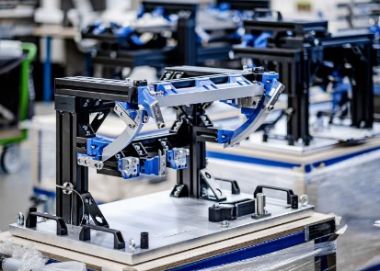
Integrated in the Smart cube are not only the assemblies but also measurement fixtures and cut-out gauges.
"With our Smart Cube, we accelerate these processes and close the gap between prototyping and production," Christophe Van den Bergh describes. He has been production manager at RapidFit, based in Leuven, Belgium, for seven years. Prior to that, he spent many years at the same location at parent company Materialise, a leading provider of additive manufacturing software and advanced 3D printing solutions for medical and industrial applications. "Our system solutions are used by US companies in particular, but customers also come from Europe, South Africa, China and Mexico. We have a number of German users who supply for the American market," says Van den Bergh.
Save Costs with Additive Processes
Smart Cube? Christophe Van den Bergh points to one of his colleagues working on a cubing model. "These three-dimensional structures are for reference. They can be used to test prototypes at an early stage of their development or to increase efficiency during assembly," he explains.
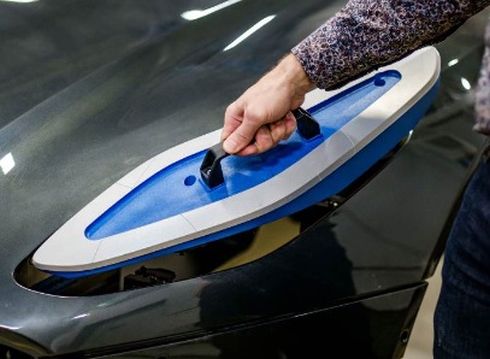
Components can be assembled in a modular fashion.
Conventional models consist of individual assemblies that are milled from plastic or aluminum blocks. Production is usually very expensive, and changes or modifications are not exactly inexpensive due to the design. "We're going a different way," stresses the production manager. "With our Smart Cube, we produce the individual built-in parts in 3D printing at significantly lower costs. This enables us to produce complex shapes and the company saves significant material costs."
The components are made of aluminum, polyamide or specially developed materials that offer similar advantages to aluminum but are even lighter. The components can then be easily assembled on a modular basis -- from the dashboard to the handle. Integrated in this cube are also measuring fixtures or cut-out gauges -- these are test tools for quality assurance. This modular concept enables different teams to work together more effectively on the vehicle design.
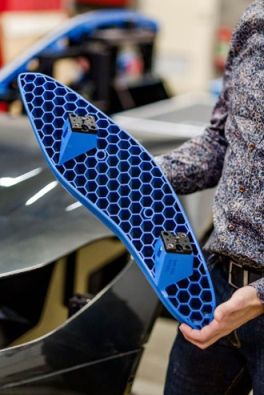
The components are manufactured by additive 3D printing from aluminum, polyamide or specially developed materials.
"The cube is created at an early stage of the design and is continuously further developed with CAD updates," the RapidFit expert describes. "In this way, manufacturers can start prototyping early and visualize the various aspects of the project." And because the modules are produced using 3D printing, the costs for modifications are low and predictable.
RapidFit can take over a large part of the design of the components itself. This is based on preliminary CAD designs. "To do this, we rely on Materialise's software and database management know-how," says Van den Bergh. "After all, we're in the same building."
Precision and Surface Quality in Demand
As economical as 3D printing is, it does have one disadvantage: Especially in the automotive industry, customers expect almost perfect component surfaces and ever-increasing accuracy -- even if it is only an illustrative model.
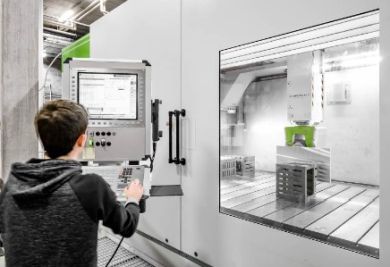
In order to achieve a very high accuracy, parts are mechanically finished.
Van den Bergh takes a component and strokes his finger across the rough surface. The component is laser-sintered, but not yet finely machined. "We were looking for a milling machine on which we could clamp components in a complete assembly and rework them with a very high degree of accuracy," reports Van den Bergh.
RapidFit made inquiries with its customers and German model makers reported they had been successfully using machines from F. Zimmermann GmbH, based in Neuhausen near Stuttgart, for years. According to them, they appreciate the stability, high speed and flexibility of these machines. They work precisely and reliably, and the milled components, which often have complex shapes, do not have to be reworked after removal from the machine.
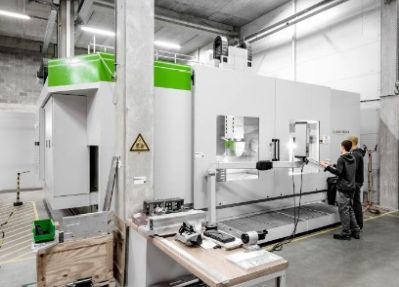
For precise finishes, RapidFit relies on a portal milling machine from F. Zimmermann GmbH.
"The operating personnel also raved about the simple and intuitive operation," says the production manager. Convinced by their customers' trust, those responsible for RapidFit contacted the machine manufacturer at the end of 2017.
Portal Milling Machine for Economical Fine Machining
"We recommended our space-saving portal milling machine FZ33 compact," reports Rüdiger Hellwig, sales manager at Zimmermann. The Y-axis moves up to 4,000, the Z-axis up to 1,500 and the X-axis up to 2,500 millimeters. "The special feature of the series is its inherently rigid cast base body with integrated table top," describes Hellwig, who is in charge of RapidFit. "In addition, there are attached side walls filled with special concrete and a structurally rigid portal."
Thanks to the performance and stability of the FZ33 compact, the aluminum components can be processed quickly and economically in 5 axes. Feed speeds of up to 60 m/min are possible with the machine, the axis acceleration reaches up to 5 m/s2. This allows excellent surfaces to be milled very efficiently.
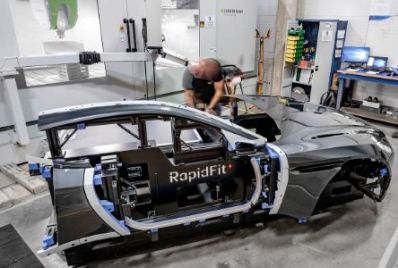
The three-dimensional models can be used to test prototypes at an early stage of their development.
In addition, the installation space offers enough room to completely machine large components from five sides.
During the development of this machine, Zimmermann placed a special focus on its service-friendliness: Everything is very easily accessible for operators. "The patented milling head technology enables fast and, together with high-resolution measuring systems, highly precise positioning," explains Hellwig.
The machine also combines high torques with high rotational speeds in the A and C axes of up to 360°/s. Production manager Van den Bergh and his staff are very satisfied with the machine. It is currently operating in two shifts. The capacity utilization is high. "Five days a week, she works at least 16 hours a day," says Van den Bergh.
Want more information? Click below.
Rate this article
View our terms of use and privacy policy ::m::